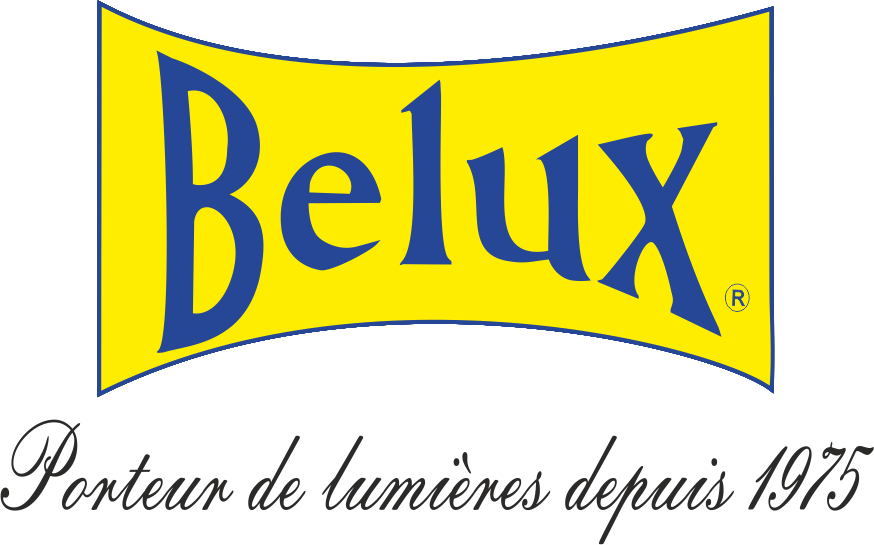
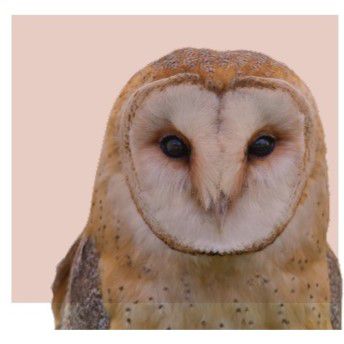
"The different coloured lights and light tones used in a lighting project,
if not carefully selected, can cause significant harm to many animal species and be lethal to some.'
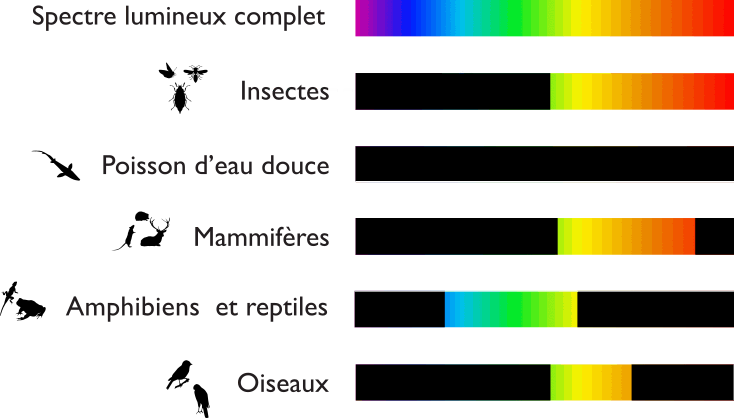
SPECIES REACTIVITY
Animal species react very differently to the colours and light tones of artificial lighting:
The majority of mammals are sensitive to two types of wavelengths (green, blue).
Primates and humans are sensitive to three types of wavelengths (red, green, blue).
Most vertebrates such as fish, reptiles and birds are sensitive to four types of wavelengths (red, green, blue, UV).
A number of animal species (such as birds for example) are also very sensitive to UV unlike humans who do not perceive them
Other animals are able to detect electromagnetic radiation in the infrared.
A large majority of invertebrate species and a significant portion of vertebrate species are nocturnal.
Artificial lighting also impacts the rest, behaviour and practices of diurnal species.
The idea is to select a spectrum that will not or may not be visible to the species intended to be preserved.

THE BioDiv SYSTEM
A MODULAR TECHNICAL RESPONSE
Until now, there were no technical tools or means available to project managers, and project managers to accompany the recommendations resulting from the implementation of black frames.
The BioDiv construction system offers the modularity necessary to meet this diversity of specific nocturnal needs.
It proposes to combine precisely selected LED spectra (light tone and colors) with optics adapted to the space. And independently manage these sources as needed.
The mixes thus made allow the creation and renovation of lighting installations while minimizing the impact on nocturnal biodiversity.
OUR RESPONSE
Choice of LEDs, shades and colors with LED spectra selected and adapted
It is therefore essential today to
• Carefully choose white light tones
• Select LED light colors
• Combine or mix the LEDs according to the animal species present on the illuminated site
This is to minimize disturbance to species and respect their biological rhythms and behaviours, while maintaining the quality of light required for different human nocturnal uses and needs.
In some cases, and given the diversity of animal species present, it will be necessary to:
› To choose the least impactful colored light or light tone for the majority of species,
› Think carefully about the spaces that really need lighting
› Minimize the ignition time at the beginning and end of the night (during the peaks of activity of nocturnal animal species), during the night and according to the seasons, to adapt to the habits and needs of the animal species concerned.
EVOLUTIVE LIGHTING SCENARIOS WILL ALLOW TO TAKE INTO ACCOUNT THE DIFFERENT USES AND NOCTURNAL NEEDS OF EACH HUMAN AND ANIMAL.
CHOOSE SHADES
The objective is to select a spectrum that is little or not noticeable for protected species.
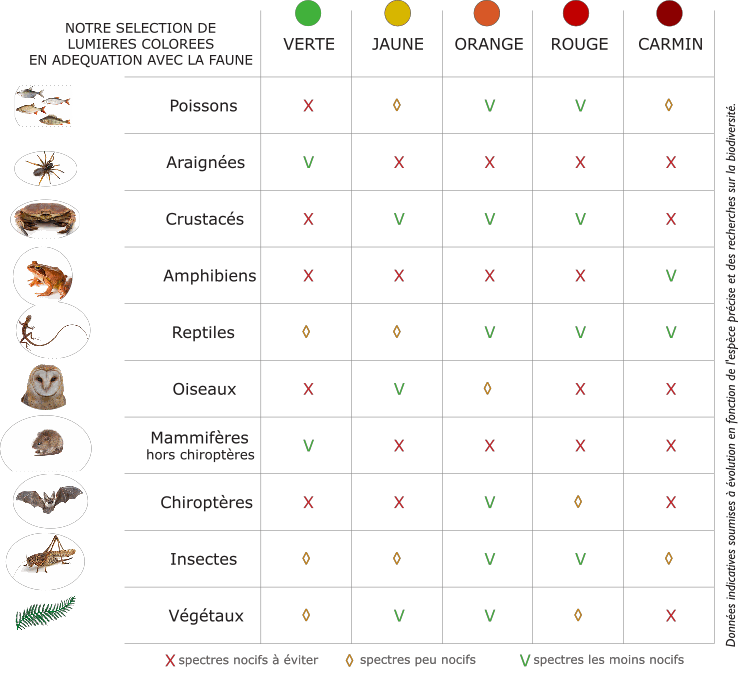
CHOOSE YOUR COLOUR TEMPERATURES
Several studies have shown that most nocturnal animal species were strongly impacted by cold white light tones above 3000K, while they better supported warm or very hot light tones (from 2200K to 2700K). Indeed, the warmer the light tone, the more the spectrum is composed of lines of lights predominantly yellow, orange and red.
It is therefore important to choose from the beginning of the lighting project, the desired light tone or tones, depending on the presence of more or less strong, current or future, animal species on the site.
It is also desirable to look at the spectrum of each light tone of the chosen LEDs, in order to analyze the line peaks of blue or green lights that can be harmful to some animal species.
Recall that in order to fight against light nuisances, light tones greater than 3000K are now prohibited in urban lighting in many countries, to best preserve the nocturnal biodiversity in the city and the circadian rhythm of users. This is due to the presence of an important blue line in the spectrum of neutral and cold white tones. To minimize the presence of blue in the spectrum, we do not pre-condite cold and hot tone mixing (ex: 4000K with 2200K to obtain 3000K).

MULTIPLE COMBINATIONS
We have therefore analysed and inventoried the spectra of the least harmful LED sources for the various animal species so that we can integrate them in different ways into our constructive system and use them in our lighting solutions.
It is thus possible to equip lighting fixtures with LED blocks on request:ONLY ONE TONE
Single white light tone (1800K, 2200K, 2700K, 3000K)
DUAL -TONETONALITÉS
Two light tones that will be lit together or differentiated according to the uses and times desired (for example with a tone of 3000K at the beginning of the night and 2200K in the middle of the night).
MIXED WHITE LED AND LED COLORS
Mixed white led and led colors (green, yellow, amber, orange or red)
UNIQUE COLOR
Unique color with a spectrum adapted to different nocturnal animal species (amphibians, birds, mammals, insects, chiroptera), which will be activated at certain times of the night or year.
TOW COLORS
Two colours with adapted spectra
The way the optics are distributed in the unit, one way or the other, also allows the luminous flux to be channeled differently according to the desired tonalities of light.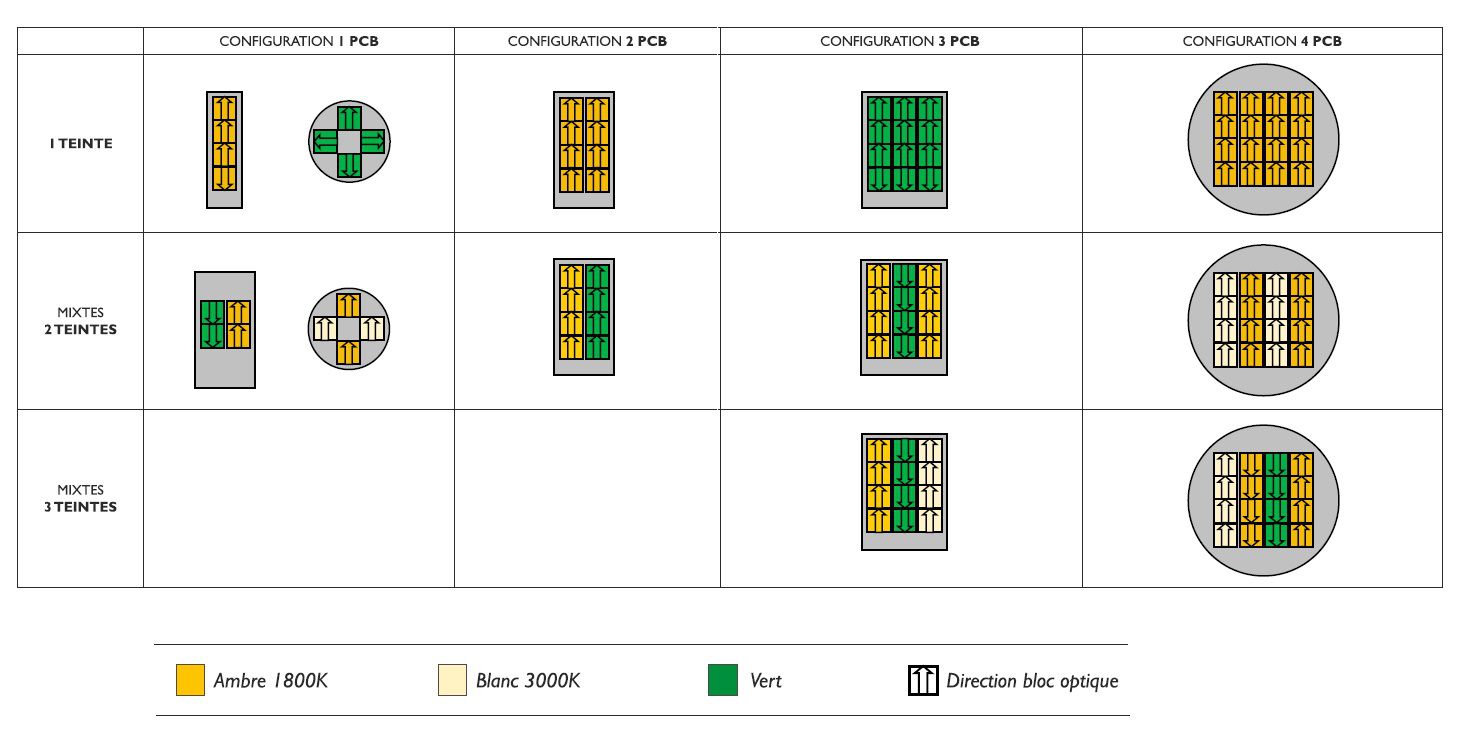
CHOICE OF SUPPORTS
Lighting devices alone or in groups, can be fixed on masts or console on facades as needed.
The choice of fire heights must also be made according to the preservation of animal species.

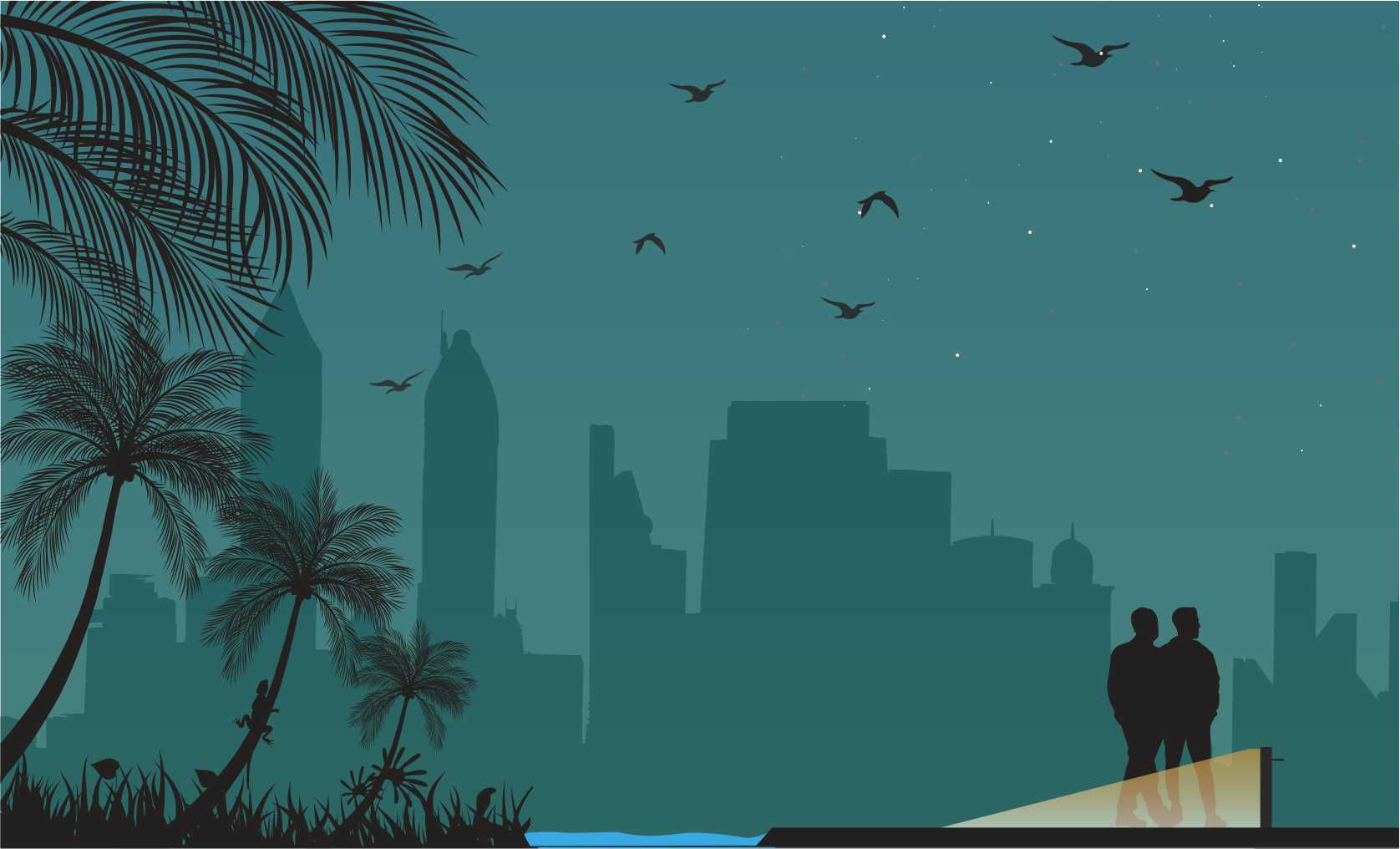
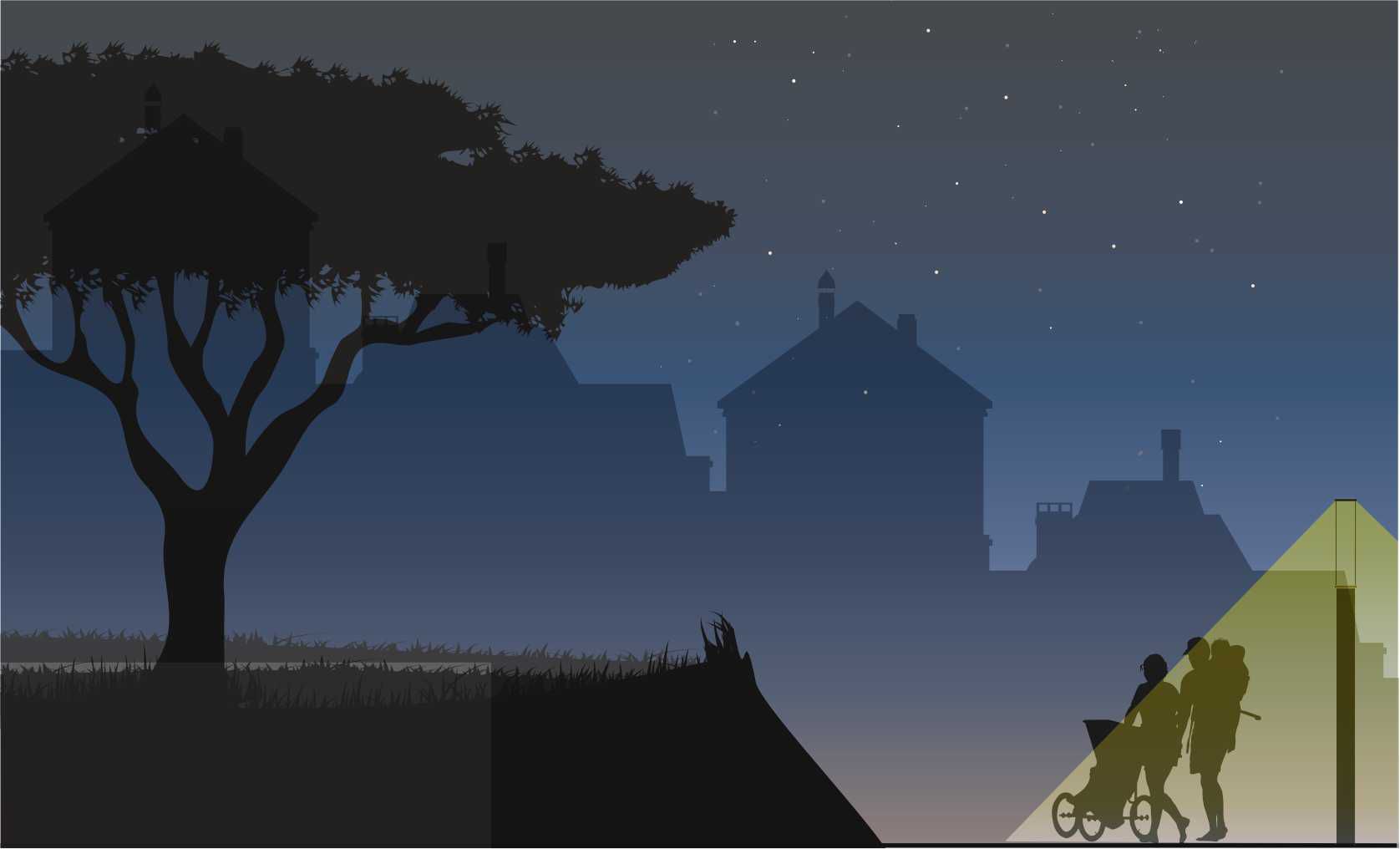
SPACE & SECTORIZATION
The BioDiv system allows a wide range of possible configurations, making it possible to treat spaces with differentiated temporalities and seasonalities from the same luminaire.
It is the possibility to build a precise response adapted to each space with the same luminaire.

scénario example:
Bike path in warm white 2700K.
Pedestrian lane in yellow with spectrum selected for bird and bat preservation

High Occupancy Range 3000K
Example of Road Scenario:
From 17h00 to 23h00 in 3000K
From 23h00 to 01h00 in 2200k
From 01:00 to 05:00 extinction
From 05:00 to 08:00 in 3000K

Low occupancy range 2200K before extinction

Frequentation range
Example of Bike Path Scenario:
On detection: 2200K
On standby on the beach from 17:00 to 01:00 in winter: red
Extinction from 01:00 to 05:00

